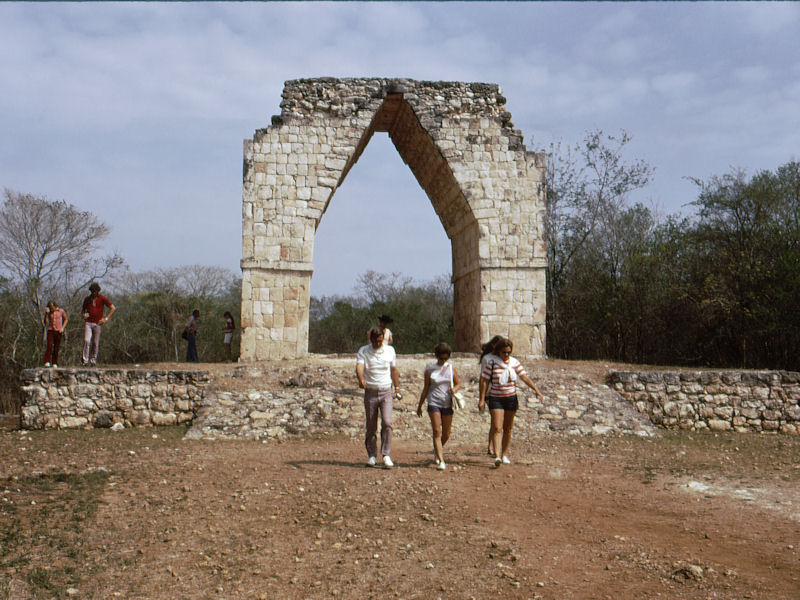Photo
album: "Mexico, Yucatán: Kabáh"
Fly
over a photo with the mouse to enlarge it
Click
on a photo to open it in a new window
On
Tuesday March 27th, 1973, we go on another excursion to visit the archaeological
sites of Kabáh and Uxmal. The site of Kabáh, situated at approximately 90
kilometres south of Mérida, is exclusively Maya and its architecture is mainly
Puuc style. It was inhabited from the 3rd century B.C. and most of its
constructions, still visible today, have been erected for many centuries when
the Spanish conquered the Yucatán.
 |
This arch stands at the beginning
of a sacbé(*), 18 km long, which connects Kabáh to Uxmal. A similar arch
can be found at the other end of this "white road", at the
entrance of the city of Uxmal.
(*) sacbé means white road because its stone paving was,
originally, coated with limestone stucco. |
 |
This is one of the most famous
constructions of Kabáh: the Temple of the Masks, characterised by the
hundreds of masks decorating its façade. These masks represent Chaac, the
long-nosed god of rain. The greatest importance is accorded to Chaac
"the protector of the harvest" in this driest country where
there are no "cénotes" and where agriculture depends only on
the rain. |
 |
Detail of the façade of the temple
of the Masks. The slant view permit to make out the long nose of the masks
of Chaac. Unfortunately most of these noses have been broken in the course
of the centuries, on the contrary to the ones we have seen on the
"Church" at Chichén Itzá. |
 |
Close front view of the façade of
the Temple of the Masks. |
 |
Another temple of Kabáh: the
Palace. |
Go
back
.
.
.
.
.
.
.


